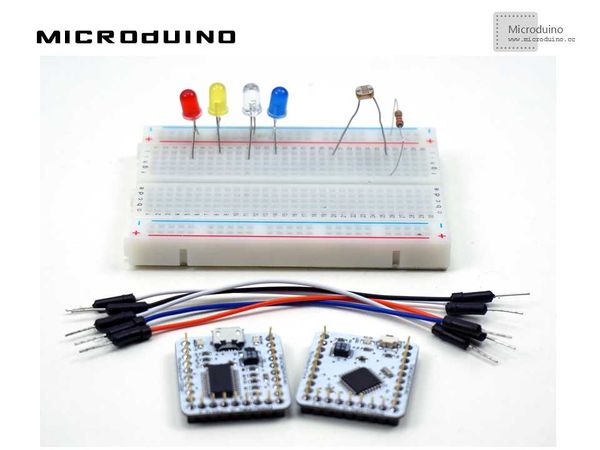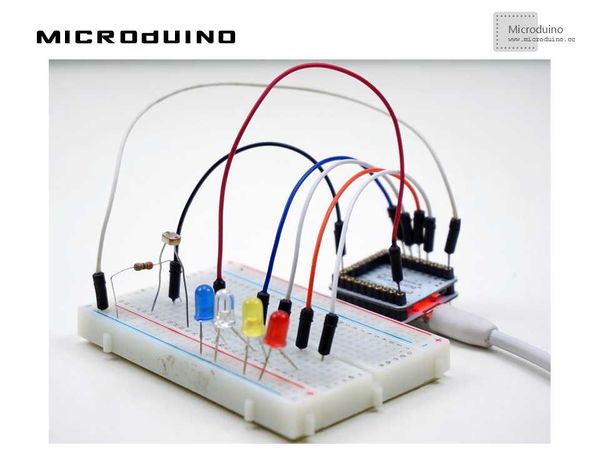Lesson 12--Microduino "Light indicator"
| Language | English |
|---|
ObjectiveIn photoresistance experiment, The light is divided into two levels, strong or weak. This experiment will finish a light indictor using 4 LEDs and divides the light into 5 levels. Photoresistance receives the more light, and light up more LED to achieve the purpose of instruction. Equipment
Experimental schematicThe photoresistance's connection in contrast to the last time, the purpose is let you know the usage of photoresistance deeply. photoresistance directly connects to the power supply at one end, the other end through a resistance to connect GND . The initial state is low, with the increase of light intensity voltage is higher and higher. Programvoid setup ()
{
Serial.begin(115200);
for(int i=2; i<=5;i++) //Set the I/O port 2 - 5 to output mode.
{
pinMode(i,OUTPUT);
}
}
void loop ()
{
int n =analogRead(A0); //Read the value of photoresistance
//Serial.println(n);
if (n>=100) //Judge the color hierarchy. You can djust the level values according to your own used environment, minimum is 0, and maximun is 1023.
{
digitalWrite(2,HIGH);
digitalWrite(2,LOW); //When no longer this level, the lights will go off
}
if(n>250)
{
digitalWrite(3,HIGH);
digitalWrite(3,LOW);
}
if(n>400)
{
digitalWrite(4,HIGH);
digitalWrite(4,LOW);
}
if(n>550)
{
digitalWrite(5,HIGH);
digitalWrite(5,LOW);
}
// delay(100);
}
ResultWhen the light is very weak, lower the seted minimum value, all the lights are off. With the increase of light, reach to a set level would light up an LED, to achieve the effect of instruction. Actually LED lamp has been flashing, because in order to make the light intensity is not a certain level, to put out the light of the level, directly after the lights out immediately, with no delay in the implementation process, as long as the grade, circulation processing, so it looks as if always on. Video |

